Our first shooting battalion
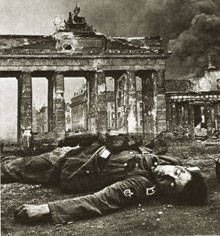 History units, all the soldiers of which were awarded the Order of Glory
History units, all the soldiers of which were awarded the Order of GloryAt the end of 1944, the immediate task of the Red Army was to reach the borders of Germany and strike at Berlin. Favorable conditions were created for this, in particular, bridgeheads on the western bank of the Vistula were captured. True, it was necessary to understaff the troops with men and equipment. Lieutenant General G. Plaskov later told me that their 2nd Guards tank the army in the battles for Poland lost more than five hundred tanks and self-propelled guns.
Germans were preparing for the decisive battle. They did not succeed in throwing our units off the bridgeheads on the Vistula, but they frantically strengthened the echeloned — seven frontier — defense on the way to the Oder. In German command, a plan was developed to strike the Allied forces in the Ardennes.
By mid-December 1944, the Germans had concentrated 300 thousand people in the Ardennes against 83 thousand from the Allies. December 16 in the morning 5.30 began the German offensive. The 106 US Infantry Division was surrounded and destroyed. The 28-I infantry and 7-I armored divisions were also defeated. The US Airborne Division 101 was surrounded. The Allies rolled back to 90 kilometers.
By the end of December, they were able to stabilize the situation, but on January 1, 1945 of the year was followed by the second powerful blow of the Germans, accompanied by the strongest bombing of airfields.
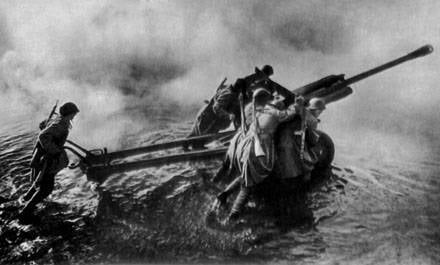
Churchill asks for help
6 January, Stalin was informed that the British Ambassador in Moscow asked him to accept it. “The personal and strictly secret message” of the British Prime Minister reads: “Very heavy battles are fought in the West, and at any time large decisions may be required from the High Command ... I will be grateful if you can tell me if we can count on a major Russian offensive on the front of the Vistula or anywhere else during January and at any other time ... I consider the matter urgent. "
It was not even a request for help, but rather a plea. The very next morning Winston Churchill read: “Personally and highly secretly from Prime Minister I.V. Stalin to the Prime Minister, Mr. Churchill: ... We are preparing for an offensive, but the weather is not conducive to our offensive. However, taking into account the position of our allies on the Western Front, the Supreme Command decided to complete preparations at an accelerated pace and, regardless of the weather, to open broad offensive actions against the Germans on the entire central front no later than the second half of January. You can be sure that we will do everything that is possible in order to assist our glorious allied forces. ”
The front commanders G.Zhukov (1 Belarusian), K.Rokossovsky (2 Belarusian), I.Konev (1 Ukrainian) and I.Petrov (4 Ukrainian) received the Bids directive: the beginning of the offensive is postponed for more early terms. In November 1966, I met with Marshal Konev several times and asked him how he had responded to the postponement of the operation for eight days.
“Only on January 9, Antonov called me on HF,” said Ivan Stepanovich. - He then performed the duties of the Chief of the General Staff, and on behalf of Stalin announced that the offensive should begin on January 12, in three days! He explained: the Allies have a difficult situation in the Ardennes, and our offensive does not begin on 20, but on January 12. I understood that this was an order and answered that I would fulfill it. It was not bravado, but a sober assessment of events: basically we were ready.
Marshal began to give figures. The front had 3600 tanks and self-propelled guns, over 17 thousands of guns and mortars, 2580 aircraft. Troops numbered 1 million 84 thousand people.
In the 1 units of the Ukrainian and 1 Belorussian fronts, there were over 2 million 112 thousands of fighters and commanders, plus the almost 100-thousandth 1 Army of the Polish Army, formed and equipped in the USSR. She, of course, was aimed at Warsaw. Plus, the troops of the left wing of the 2 Belarusian and right wing of the 4 of the Ukrainian Front.
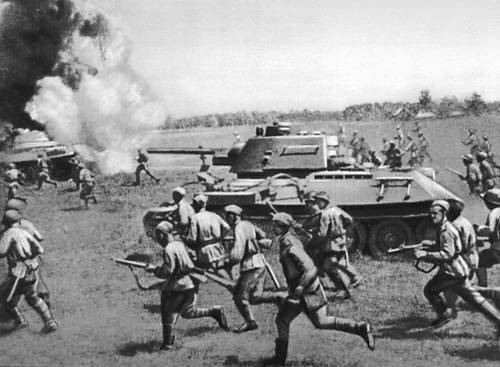
Half an hour before the attack ...
Tough disguise measures were taken. Army and divisional newspapers wrote a lot about how to build warm dugouts, to fuel fuel. The Germans had the impression that the Russians were going to spend the winter on the Vistula. They built false crossings, built plywood tanks and guns. Paradoxically, the Germans themselves helped in disguise. Almost every night, from the German positions, it was heard: “Rus, dafay“ Katyusha ”!” And immediately from our side the sound transmitting installations carried out the “application”. And to the loud sounds of the song, tanks, guns, and Katyushas crossed the river.
The artillery of the 1 of the Byelorussian Front was commanded by General V.I. Kazakov. In the 1965 year, when I worked in a Moscow regional newspaper, we published a lot of materials in connection with the 20 anniversary of the Victory and the 25 anniversary of the battle for Moscow. Twice the general Kazakov, Hero of the Soviet Union, holder of three orders of Suvorov, I degree, came to the editorial office for interviews. Among the "techies" - tankers, gunners, aviators - a unique fact.
“We have concentrated over 11 thousands of guns and mortars on both bridgeheads,” he said. - The first fire attack did not last an hour, as usual, but 25 minutes. More often than not, as soon as we opened fire, the enemy managed to withdraw his troops to the second and even third line of defense. We spent a lot of shells without causing much damage. And this time they hit the German defenses to a depth of 6-8 km. Infantry went on the attack after the firing of the shaft, which the enemy did not expect.
According to the schedule, the commander of the 215 regiment of the 77 Guards Chernigov Infantry Division of the Guard Colonel Bykov gathered the battalion commanders and companies and announced to them the exact date of the offensive. Basically the regiment is ready to attack. The chief of staff of the guard, Lieutenant Colonel Manayenko, introduces the order: “1. In the first echelons to organize food with the expectation: in the morning 13.1.1945 to give out hot food and according to 100 c. vodka. 2. In the morning 14.1.1945 to 7.00 finish the issuance of a hot breakfast and on 100 c. vodka. Before taking action in 30-40 min. ration: boiled meat, bread, sugar, lard, enough for a whole day, and give out on 100 gr. vodka ".
Vodka was a necessity, because there was not just bad, but terrible weather. That rain, then snow, under the feet of liquid porridge. Not only his feet got wet, but overcoats and sheepskin coats became poods. Helped the old Russian "drug."
14 January 1945 of the year. Early morning, still dark. Heavy snow is falling, thick fog. The Military Council of the 1 of the Byelorussian Front in full force, headed by the commander, are forwarded to the Magnushevsky bridgehead. In 8.30, V.I. Kazakov commanded: open fire! A blow of colossal power fell upon the German positions.
The commander of the 1 Infantry Battalion of the Guard, Major Boris Yemelyanov, put a platoon of Mikhail Guriev on the edge of the attack. A precocious Siberian - not yet 21 - has fought since August 1943.
The sappers returned, they reported: the aisles were made, the mines from the cast routes were removed. Yemelyanov looked at his watch: 8.30. It thundered so that the neighbor could not be heard. Above the German positions is a continuous curtain of fire and smoke. 8.55. The battalion commander nodded to Guryev: let's go! And then he transferred to the regiment headquarters: he went on the attack.
9.00. Guryev shouts on the phone: seized the first line! Yemelyanov immediately duplicates the report to the regiment.
The first trench is behind. The machine gunner Sergeant Gavrilyuk rushes to the second line and falls: wounded. Ties the wound and continues to fire, moving to the next trench. Out of action eliminates the entire machine gun crew. Left alone, the sergeant burst into the trench and gave the machine gun a long line. The trench is free.
9.25. 2 trench line captured. 10.30. Has mastered the 3 line. 11.00. Reached mark 162,8. The enemy has a weak resistance.
The battalion goes forward, but the left flank is lagging behind: there the enemy machine gun forced the soldiers to lie down. Private Bakhmetov clasps his way to the rear of the machine-gunner, picks up a German grenade on the way. The throw, the explosion, the machine gun goes silent.
13.15. Were fixed according to the oral order of the divisional division. Overtaking the running infantry and escort tanks, tank brigades rushed forward. 20.00. The day we killed and injured 71 people.
In one of the trenches, Guryev saw a group of Germans at the mortar. He and two other fighters rushed at them. Melee. Then they could not remember what they beat - with the butts of machine guns or with their fists. They just took a breath, the orderlies carried the wounded company. Guriev - to the telephone, reports to Yemelyanov: I replace the company commander.
- Misha, hold on! The battalion shouts back.
The enemy could not stand the organized attack of the battalions and began to withdraw their units.
Writing in the 215 regiment's combat log for January 14: “Vigorously developing the offensive and relentlessly pursuing a defeated enemy, by the end of the day the regiment units destroyed soldiers and officers before 80, trophies were captured - weapons of different caliber 50; 8 machine guns; 20 rifles.
The Germans threw their reserves, they were crushed, not allowing to turn into battle formations. Already on the third day of the offensive, the German front was broken through by the 500 km width and 100-120 km depth. On this day, Warsaw fell. The military council of the front denounced Stalin: the fascist barbarians destroyed the capital of Poland. The city is dead.
The 69 Army (Commander - Colonel-General Kolpakchi), which included the Emelyanov battalion, advanced south of Poznan. The army captured an important stronghold - the city of Radom. On other days the battalion passed - with battles! - Up to 20 km per day.
The tense battle sustained 215 th regiment for the Polish city of Lodz. On January 21, parts of the regiment crossed the Warta River to the south-western outskirts of Lodz. The strike was so swift and impudent that the Germans did not have time to send trains with goods and equipment from the station. One train was unusual: with wounded German soldiers and officers. They were 800 people. These prisoners brought a lot of trouble to the rear services: a lot of their wounded, and then several hundreds of Germans were in need of care.
While the 8-I Guards Army stormed the 60-thousandth garrison of Poznan, the rest of the two fronts moved towards the Oder. January 29 The 1 Battalion reached the German-Polish frontier, and the next day, with a swift throw, it reached Oder. In two weeks more than 400 km fights!
In the military newspapers of that time it was impossible to mention about divisions, armies, even regiments and battalions. Only anonymous "part", "division". Likewise, no settlements or rivers were indicated, so that the enemy would not know which part he was talking about. So the newspaper 69 Army "Battle Flag" mentioned about the "big German river." That was the Oder, to which the First Rifle Battalion broke through.
A rare case: the operation has not yet ended, and the commander of the 77 Guards Division, General Vasily Askalepov, represents the 215 th regiment for awarding the Order of the Red Banner. Read lines from premium sheet: with 14-till 27 January destroyed before 450 enemy soldiers and officers captured 900 people captured 11 warehouses, 72 weapon, 10 mortars, 66 guns, 600 rifles, 88 vehicles, released hundreds of settlements . On the same day, the commander of the 25 Infantry Corps, General Barinov, puts a resolution on presentation: the 215 Guards Infantry Regiment deserves a government award. February 19 The Presidium of the USSR Supreme Soviet awarded the regiment with the Order of the Red Banner. And the commander of the regiment of the guard Colonel Nikolai Bykov became the Hero of the Soviet Union.
The Military Council of the 69 Army discussed the results of the Vistula-Oder operation. And he made a unique decision: to award the whole personnel of the battalion - and this is an 350 man! - Orders of Glory III degree; all company commanders - orders of the Red Banner; and all platoon commanders - the orders of Alexander Nevsky. And henceforth call this division the "Battalion of Glory." And although there is no such name in the Red Army, it is nowhere stated that such a thing is forbidden. During the paperwork it turned out that someone had already been awarded the Order of Glory of the third, and even the second degree. They were awarded orders of the second and first degrees. Thus, three full men of the Order of Glory appeared in the battalion - the shooter R. Avesmuratov, the sapper S. Vlasov, the artilleryman I. Yanovsky. The Military Council of the Army sent to the Presidium of the Supreme Soviet of the USSR a submission for the assignment of the title of Hero of the Soviet Union to the battalion commander Boris Yemelyanov and the platoon commander Mikhail Guryev. The document last said that he was injured 12 once and always returned to his unit. In total, Mikhail received 17 (!) Wounds for the war, did not leave military service, and after the Victory, he retired as a lieutenant colonel.
Strangely enough, in the archives of the 69 Army headquarters about the "Battalion of Glory" there were very few documents. I, for example, did not manage to find out who was awarded posthumously, whether the family of the awarded received the orders. (It was the Order of Glory that allowed dead and dead to be kept in families.) How was it with those who left after being wounded? And how many of these? Either it was not until the archive was then, or our brother-journalist forgot to return the papers to the archive.
The capture of Berlin is postponed.
The Vistula-Oder operation began on January 12 and ended on February 3. In three weeks of fighting, the Red Army advanced 500 km on a wide front. Wehrmacht 35 divisions were completely destroyed, 25 lost more than half of the composition. Nearly 150 thousands of German soldiers and officers found themselves in Soviet captivity. Thousands of tanks, guns, and many other vehicles were captured. Soviet troops came to the Oder, with the move seized a bridgehead on the other side.
After almost 20 years after that battle, I was able to visit these places. The events reminded of the monuments to the Americans who fell here and the long, flat rows of German graves with crosses and iron helmets.
To Berlin remained 70 kilometers. Was it possible to capture the German capital then, in February, 45? The controversy around this unfolded immediately after the Victory. In particular, Marshal V.I. Chuykov, the hero of Stalingrad, complained that the commanders of the 1 Belarusian and 1 Ukrainian Fronts did not achieve the Stavka’s decision to continue the offensive in early February and to seize Berlin. "This is not so," argued Zhukov. Both he and Konev made such proposals to the Headquarters, and the Headquarters approved them. The Military Council of the 1 of the Byelorussian Front sent to its top commanders approximate calculations for the near future. The second point was: to consolidate success with active actions, to replenish reserves "and take Berlin with a swift 15-16 February throw". Signed orientation Zhukov, a member of the Military Council Telegin, chief of staff Malinin.
Many years later I had the opportunity to meet with Konstantin Fedorovich Telegin. I asked: could we really capture Berlin in February forty-five?
“At the end of January, this question was discussed at the Military Council,” he answered. - Intelligence reported on the opposing enemy. It turned out that the advantage was on our side. We appealed to the Headquarters, they supported us and began to prepare for the final assault. But soon I had to beat the line ... George Konstantinovich Zhukov, analyzing the situation, came to the conclusion that there was a danger of a blow from the large German forces — up to forty divisions — from Eastern Pomerania over our right flank and rear. If we broke through to Berlin, the already stretched right flank would be very vulnerable. The Germans could simply surround us, crush our rear, and the case could have ended tragically. First of all, it was necessary to eliminate this threat. Bid agreed with us.
In turn, as a result of the Vistula-Oder operation of the Soviet army, the German command understood the danger of the situation on the Eastern Front, and from the Ardennes, on the platforms, railway platforms and under its own power, tank divisions — 800 tanks and assault guns — reached the east immediately. Thrown and infantry units. Total German strike force in the Ardennes for the 10 – 12 days “lost weight” on the 13 divisions. Allied command could begin offensive operations near the borders of Germany and on its territory, having a huge advantage in manpower and equipment.
17 Jan. Churchill writes to Stalin: "On behalf of His Majesty's Government and with all my heart, I want to express to you our thanks and offer congratulations on the gigantic offensive that you started on the eastern front."
During the Vistula-Oder operation on two fronts, a 43251 fighter and commander fell. And nearly as many 150 thousands were injured; not all of them returned to service after treatment. In the battles for the liberation of Poland, 600 killed thousands of Soviet soldiers and officers. It is impossible to calculate how many lives of the Americans and the British were saved by the Red Army by the Vistula-Oder operation.
Hundreds, thousands of such battalions, like the battalion of Boris Yemelyanov, participated in that battle, displaying heroism and military skill. And those who fell, not reaching the first German trench, and those who met with the American soldiers on the Elbe, with their blood, and even life, contributed to our common victory.
- Vladimir SHLYAKHTERMAN
- http://www.sovsekretno.ru"rel =" nofollow ">http://www.sovsekretno.ru
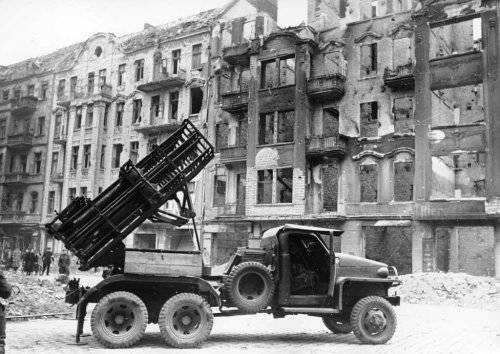
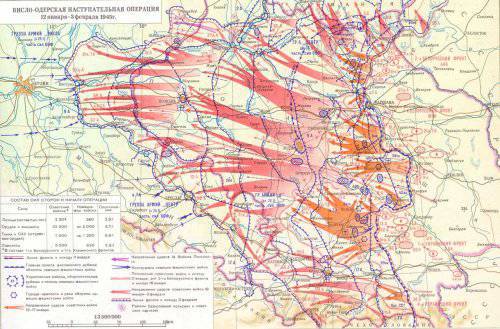
Information